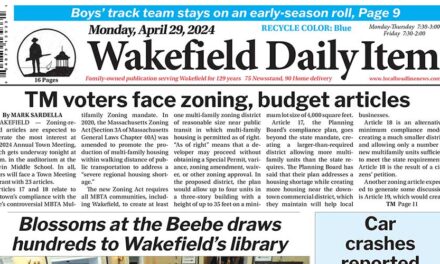Published in the July 13, 2017 edition.
By MARK SARDELLA
Last May, I bought a new car. I try to update my ride every 14 or 15 years, whether I need to or not. In this case, I didn’t have a choice.
I had brought my trusty 2003 Mazda Protégé in for an inspection sticker. The car ran great. It didn’t burn or leak a drop of oil and it had never in its life failed to pass inspection. So confident was I that before bringing it to be inspected, I bought a pair of new tires for the front, because I suspected that the two that were on the car wouldn’t pass, given that the tread didn’t even hide Lincoln’s hairline.
So I drove in to the inspection station full of confidence that I would be driving my trusty old chariot for at least one more year. Sure, the old mare had some rust around the wheel wells. But who among us isn’t showing our age a little? It doesn’t mean we’re ready to be put out to pasture. (Does it?)
I took it to a Mazda dealership because it was convenient and I knew they couldn’t mark up the price for an inspection sticker. The nice man said it would be about 30 minutes and told me to have a seat in the waiting room.
That was fast, I thought, when I heard my name called about 10 minutes later. But the news was not good.
“We can’t put a sticker on that car,” he said. “The underside is badly rotted. It’s not safe to drive.”
I left in a moderate state of denial. The car only had 115,000 miles on it. It was barely broken in. Was this a clever conspiracy to sell me a new car? Maybe the Russians were in on it, for all I knew.
So I drove straight to a gas station down the street that also does inspections.
“It’s not going to pass,” the guy said, in an accent that sounded vaguely eastern European, confirming my suspicions. First they steal the election and now they’ve taken over inspection stations in a sinister plot to get Americans to buy new Japanese cars! It was unbelievable, but what other explanation could there be? Somebody alert CNN.
When I regained my senses, I realized that I had 10 days left to acquire another vehicle before my old sticker expired. And if Vlad wanted me to buy a brand new car, who was I to resist?
So I returned to the dealership that had rejected the Protégé determined to buy a new Mazda 3 Sport.
The dealership was going to pretend to give me $1,000 for my worthless Protégé, but that meant I would have to find the title, which I hadn’t laid eyes on since 2003. Miraculously, after only an hour of looking I did find it. I also found several unrelated items that I had previously torn the house apart to look for, proving my theory that if you want to find something, look for something else.
It turns out there have been a few advances in automotive technology over the last 14 years. For one thing, no car key. I figure I’ll stop trying to put a key in the steering column roughly about the time that I’m ready for my next car.
Also, my new car has a TV sticking up out of the dashboard. It only gets one channel – it shows what’s behind you when you’re in reverse. After about six weeks, I’m slowly learning to rely on the backup camera. At first, I didn’t quite trust it. (What if it’s showing reruns?) Before long, I’ll be wondering how I ever survived without it.
There’s a radio in the car – somewhere. There’s nothing on the face of the dashboard with dials and preset buttons. The radio is controlled by knobs and dials on the console between the front seats. The dashboard TV even displays the song title and the artist that the radio station is playing! My old car had long ago stopped even displaying the time on the radio’s LED panel. Usually it displayed something like “] ^ : [ -”, which I now realize was probably Russian for “buy a new car.”
My new car not only knows what song is playing on every radio station, it can even tell me what the traffic’s like on 128 and when it’s time for an oil change.
By the time 2020 rolls around, I suspect it will be telling me who to vote for too.





